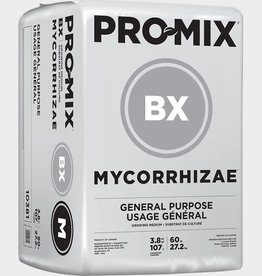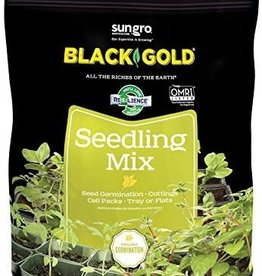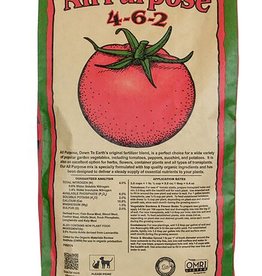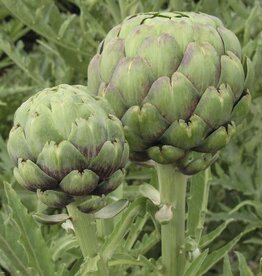HM Bermeo F1 Cauliflower: 25 SEEDS
| Availability: | In stock (9) |
Photo and Description Credit - High Mowing Seeds
Early maturing cauliflower with a great inner wrap.
Hardy leaves surround a reliable firm, round, domed head. Excellent variety for summer production due to exceptional heat tolerance. Heads are uniform and dense, making it a great choice for commercial growers. Plants hold well in the field. From our partners at Bejo Seeds.
- Heat tolerant
- 6-7" heads
- Hybrid
5.6-7.5M (6.3 avg) seeds/oz, 90-120M (100M avg) seeds/lb. M=1,000. Direct seeding rate: 2 seeds every 12", thin to 1 plant in rows 18-30" apart. Transplants: 12-18" apart in rows 18-30" apart.
Disease Resistance Details
Intermediate Resistance: Verticillium Wilt
Cultural Info
Cauliflower is a cool season biennial in the Brassicaceae family, sharing species name Brassica oleracea with brussels sprouts, cabbage, collards, kale, broccoli, and kohlrabi. Most cauliflower varieties are white, but a few are purple. The spectacular Veronica Romanesco has a green floret that grows in a spiky spiral.
Soil Nutrients and Requirements
Cauliflower prefers well drained fertile soils high in organic matter. It will tolerate slightly alkaline soil, performing best in the 6.0 – 7.5 range. A general guideline is 2-3 lbs of 8-16-16 fertilizer over 100 sq ft of garden area two weeks before planting. If boron is not present in your soils, consider adding 1 Tbs per 100 sq ft. If soils are heavy or tend to be wet, a raised bed is recommended. Mulch can help keep soil cool and moist.
Seeding Depth
1/2"
Plant Spacing
18-24”
Row Spacing
24-36”
When to Sow
Transplanting is recommended for spring crops, especially in the Northeast. Start indoors 4-6 weeks before planting date. Optimal soil temperature for germination is 65-75°F, but cauliflower will germinate as low as 50°F. Transplant out when seedlings have 4-5 true leaves. Older plants are more susceptible to bolting if temperatures are uneven. Fall plantings can be direct seeded or transplanted in mid-summer.
Other Considerations
Heads will not develop well in hot or dry weather. Timing is critical.
Harvest
Cauliflower heads should be harvested while curds are still tight. Check fields every 2-3 days. Cover developing heads or tie leaves together to protect heads from sunlight for blanched effect. Self-blanching varieties have tight leaf curl around heads so minimize need to cover. Harvest heads promptly when they are full size but still compact, white and smooth. Delaying harvest results in curds turning loose and ricey. Cool cauliflower immediately after harvest to retain quality.
Storage
Store at 32°F for 1-2 weeks.
Pest Info
- Cabbage looper, imported cabbage worm, and diamondback moth are of the Lepidoptera order and can thus be controlled by Bacillus thuringiensis (such as Dipel DF) and/or spinosad (such as Entrust™), preferentially in rotation with one another to prevent selection of resistant individuals (check with your certifier before applying).
- Protect plants from flea beetles by using floating row covers in the early season.
- Root maggots can be controlled by applying beneficial nematodes.
Disease Info
- Black rot (Xanthomonas campestris pv. campestris) first appears as V-shaped, yellow lesions at leaf margin. Infected plants should be pulled up immediately, and plantings should never be worked during wet conditions.
- Fusarium yellows, caused by the bacteria Fusarium oxysporum f. sp. conglutinan, manifests as yellowing of the lower leaves 2-4 weeks after transplanting. Yellowing moves to upper leaves and ultimately causes wilt.
- Fungal diseases can be prevented by spraying with copper hydroxide (such as Champion WP™and/or oxidate (such as Storox™), but are best prevented by production practices that build soil and promote vigorous plant growth.
- Head rot of broccoli and cauliflower, caused by several different bacterial species, can develop quickly under conditions of high moisture and high temperature. It shows up as leaf discoloration and decay at base of outer leaves. Head rot is prevented by production practices that enhance air movement to promote drying, as well as maintenance of adequate calcium and boron levels in soil.
- Clubroot is a soil borne disease which stunts the roots of the plants so that they are not able to develop normally. Rotate crops and add lime to raise soil pH to 7.2.









